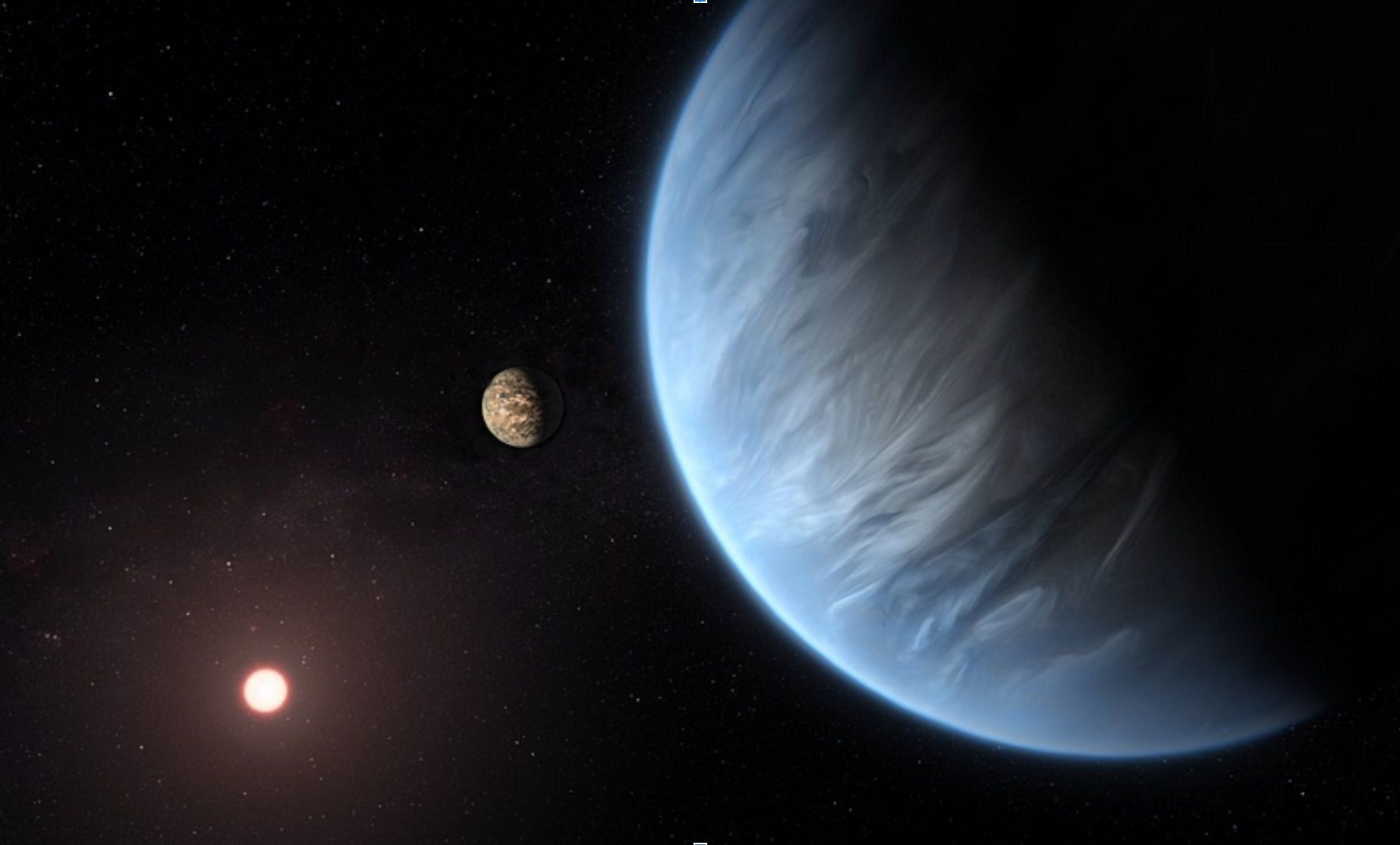2 'super-Earth' exoplanets spotted in habitable zone of nearby star
NASA's TESS spacecraft found the two planets, which are slightly larger than Earth.

Astronomers have spotted two "super-Earth" exoplanets orbiting within the habitable zone of a nearby star.
Each of the newfound exoplanets is slightly larger than our planet, and both circle the same red dwarf star.
The exoplanets were spotted by NASA's Transiting Exoplanet Survey Satellite (TESS) as they crossed, or "transited," the face of their parent star, TOI-2095, which lies around 137 light-years from our solar system. This transit caused dips in the light from the star, and analyzing those dips revealed the presence, as well as some characteristics, of the two planets.
Related: Super-Earths: Exoplanets close to Earth's size
As a red dwarf, TOI-2095 is part of the largest family of stars in the universe. Despite being cooler than the sun, red dwarfs are known to experience violent outbursts of ultraviolet and X-ray radiation in their youth. This radiation could blow away the atmospheres of planets orbiting relatively nearby. As a result, scientists aren't sure if planets with a red dwarf's habitable zone — defined as the range of distances from a star in which liquid water could be stable on a world's surface — are actually hospitable to Earth-like life.
This makes the two planets orbiting in the habitable zone of this red dwarf — which have been designated TOI-2095 b and TOI-2095 c, respectively — tantalizing prospects for further investigation by astronomers.
The distance between the closest planet to the red dwarf, TOI-2095 b, and its star is around one-tenth of the average distance between the Earth and the sun. The exoplanet, which is 1.39 times wider than our planet but has up to 4.1 times its mass, takes around 17.7 Earth days to orbit the star.
Get the Space.com Newsletter
Breaking space news, the latest updates on rocket launches, skywatching events and more!
The system's second planet, TOI-2095 c, is a little farther out than its counterpart; takes 28.2 Earth days to orbit the red dwarf. This exoplanet has a diameter around 1.33 times that of Earth and has up to 7.5 times the mass of our planet. The planets likely have surface temperatures between 75 degrees Fahrenheit and 165 degrees Fahrenheit (24 to 74 degrees Celsius), researchers said.
The team behind the discovery, led by astronomer Felipe Murgas of the University of La Laguna in Spain, pointed out that the relatively long orbital periods of these two planets could provide crucial data that can help shed light on the processes that shape the composition of small planets orbiting red dwarfs.
The discovery of these two exoplanets further demonstrates the power of NASA's TESS mission. Since its launch in April 2018, the exoplanet hunter has found about 330 confirmed alien worlds, as well as more than 6,400 candidates that await follow-up study or analysis.
The team now intends to follow up on the discovery of the two super-Earths by making precise measurements of their radial velocity. Using these measurements, they can better estimate the mass of TOI-2095 b and TOI-2095 c, which would allow the densities of the planets to be more accurately determined. This could help astronomers discover if these two planets have managed to hang on to their atmospheres.
The team's study was posted on the paper repository arXiv last month.
Follow us on Twitter @Spacedotcom or Facebook.
Join our Space Forums to keep talking space on the latest missions, night sky and more! And if you have a news tip, correction or comment, let us know at: community@space.com.

Robert Lea is a science journalist in the U.K. whose articles have been published in Physics World, New Scientist, Astronomy Magazine, All About Space, Newsweek and ZME Science. He also writes about science communication for Elsevier and the European Journal of Physics. Rob holds a bachelor of science degree in physics and astronomy from the U.K.’s Open University. Follow him on Twitter @sciencef1rst.
-
rod "This makes the two planets orbiting in the habitable zone of this red dwarf — which have been designated TOI-2095 b and TOI-2095 c, respectively — tantalizing prospects for further investigation by astronomers."Reply
My notes. Using the mass and radius of TOI-2095 b, gravity relative to Earth = 2.6234E+00, escape velocity = 20.24874296 km/s. The exoplanet has a deep gravity well and mean density about 1.1538E+01 g cm^-3.
Using properties for TOI-2095 c, this is another deep gravity well exoplanet reported. Radius = 1.33 rearth, mass = 7.4 mearth. Surface gravity = 4.1825E+00 or 4 g compared to Earth's 1 g. Escape velocity = 26.37249295 km/s, mean density = 1.7289E+01 g cm^-3.
Ref - Two super-Earths at the edge of the habitable zone of the nearby M dwarf TOI-2095, https://arxiv.org/abs/2304.09220, 18-April-2023. -
Unclear Engineer I always wonder about the "habitable zone" definition when I see stories about massive planets orbiting stars that might blow away their atmospheres, or might not. With "gas giants" making "hot Jupiters" near some such stars, it seems to me that we really need to know what the atmosphere of a planet is like in order to have any idea whether it is habitable for life of the types we currently know anything about. A dense atmosphere on a "super Earth" should probably make such a planet habitable at a greater distance from its star due to greenhouse effects. Or perhaps it could be like Venus, and have too much greenhouse effect to support liquid water on its surface.Reply -
iMaxPlanck No mention in the article of whether these new finds are tidally locked. Seems like many recently discovered exoplanets are.Reply









